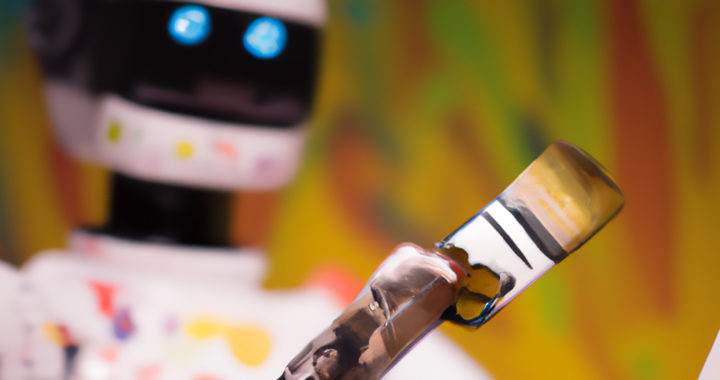Generative AI has exploded in recent years due to the advances in machine learning and deep learning models and other improvements in the subfields of artificial intelligence such as natural language processing and computer vision.
There are now several generative AI software programs and services that can generate data or content. DALL-E is one of the most notable examples. OpenAI, the AI research lab behind ChatGPT, is also behind this image generator service.
Pros of DALL-E 2: The Good
DALL-E 2 is the second version of the original DALL-E image generator based on deep learning and natural language processing and the more specific Generative Pre-Trained Transformer 3 or GPT-3 large language model. It was announced in April 2022 and was made available to the public beginning in September 2022.
The applications of DALL-E 2 center on generating images using a text command or text-based descriptive prompt. These generated images can be used for personal and commercial purposes without needing to secure licenses.
Nevertheless, since it was made available to the public, several reviewers, testers, and users have explored its different capabilities and other notable applications. Other software developers and providers of AI-based services have also used it as a generative AI model to launch and market their own generative AI applications.
Take note of the following benefits of using DALL-E 2:
1. Free and Paid Options
OpenAI has opted for a freemium business model for this particular generative AI service. A user has 50 free credits in his or her first month and 15 free credits in each succeeding month. Note that one generated and downloaded image costs one credit. Purchasing additional 115 credits will cost a particular user USD 15.00. This is reasonably inexpensive for individuals or organizations who require substantial amounts of images.
2. Simplifies Image Creation
The main benefit of DALL-E 2 is that it simplifies the creation of images. This successor to the first DALL-E model is specifically capable of generating more realistic images at higher resolutions that incorporate different artistic concepts, attributes, and styles. Users do not need to have graphics design or photo editing skills.
A mere descriptive text automates the entire image creation process at a rate that is faster than creating an image from scratch via a design software. Nevertheless, considering this main selling point of DALL-E 2, this service benefits publishers, marketers, graphics designers or photo editors, online influencers, and business owners, among others.
3. User Owns the Copyright
Another advantage of DALL-E 2 is that the applicable ownership rights to the generated images belong to a particular user. This user is free to use his or her generated image for personal and commercial purposes. Furthermore, considering this notable selling point, this can save individuals and organizations from costs associated with purchasing images online or spending on securing licenses. Note that images fall under copyrights but they can also be considered trademarks when used as a brand identifier.
Cons of DALL-E 2: The Bad
The aforementioned benefits and applications of DALL-E 2 are undeniable. However, upon running a series of tests. The service makes it easier for individuals and organizations to create and own images for whatever intended purpose. However, upon running several tests, its limitations have become more apparent.
Generative AI applications or services are not perfect. Their capabilities depend on the deep learning models and the training datasets used. OpenAI built its image generator service using the biggest large language model in the world.
However, despite having one of the best models and datasets, machine learning and deep learning, natural language processing, and artificial neural networks have issues and limitations that affect the capabilities of a particular AI application or AI-based product. The disadvantages of DALL-E 2 demonstrate the drawbacks of its AI model.
Take note of the following issues with DALL-E 2:
1. Best for Surreal Artwork
This image generator is best for generating surreal artwork. It has demonstrated improvements compared to its predecessor but it is still far from producing photorealistic images. There are other AI-based image generators that can produce specific classes of images for specific purposes. Canva is still a better platform for generating visual content for marketing purposes. Dream by WOMBO generates more realistic renditions while Jasper also produces high-quality digital images with more customization options.
2. Hitches in Image Generation
DALL-E 2 is not perfect. Its fundamental large language model only understands the English language. Non-English speakers will have a hard time generating their desired images because the service requires using detailed descriptive tests. The service stills struggle to produce an intended image despite a user placing as many details as possible,
Remember that the service requires detailed descriptions. However, despite this, another notable problem with DALL-E 2 is that its language processing capabilities have a limitation. It cannot produce accurate images when a particular descriptive prompt has more than three objects, negation, numbers, and connected sentences.
3. Possible Legal Issues
Other possible ethical issues and legal problems might emerge from using DALL-E 2. It is important to note that this service generates images from a huge collection of images that were scrapped in a public database such as the internet. There is a likelihood that a particular generated image will have some degree of resemblance to an original image or other generated images. This can create issues related to intellectual property infringement that can result in actual legal problems when used for commercial purposes.





